
Sony FE 55mm f/1.8 ZA Carl Zeiss Sonnar T* Review
27 July 2015
A few days ago I had the chance to test this lens, the Sony FE 55mm f/1.8 ZA Carl Zeiss Sonnar T* for the Sony full frame E-mount, which a very good friend of mine, Giuseppe Milo (check out his website), recently bought. Initially it was a test to compare that lens with my copy of the Fujinon XF 35mm f/1.4 R, something similar to my previous test with the Canon 50mm f/1.4.
But unfortunately the lack of focus distance scale of the Fujifilm lens sometimes is a problem, and I didn’t notice that with the fuji I wasn’t on infinite focus, but it was focusing a little bit earlier, not by much, but still it wasn’t a reliable test anymore, and it has to be re-done (I know, it was very dumb, but that’s the price you pay when you do things on a rush).
Anyway, the test with the Sony Sonnar 55mm was perfect, and here I’m going to write my impressions, and a sharpness test.
To be clear, the test has been done on a Sony A7 camera, on a tripod and using a remote shutter to avoid any possible shakes, and I’ve done multiple shots from for any single aperture step, starting from f/1.8 and then passing for any of the standard single stops (f/2, f/2.8, f/4 and so on until f/22 which is the minimum aperture possible with this lens).
Here you can find a summary of the specs for this lens:
| Focal Length | 55mm |
| Aperture | Maximum: f/1.8 Minimum: f/22 |
| Camera Mount Type | Sony E (Full-Frame) |
| Format Compatibility | 35mm Film / Full-Frame Digital Sensor |
| Angle of View | 42.9° |
| Minimum Focus Distance | 1.64' (50 cm) |
| Magnification | 0.14x |
| Elements/Groups | 7/5 |
| Diaphragm Blades | 9 |
| Autofocus | Yes |
| Filter Thread | 49mm |
| Dimensions (DxL) | 64 x 71 mm (Approx. 2.54 x 2.78") |
| Weight | 281 g (0.62 lb) |

Canon 50mm f/1.4 VS Fujinon 35mm f/1.4: the battle of the normals
25 June 2015
In the past year and half I was divided by two cameras, like a “ménage à trois” romance, on one site I had the old school guy, the Canon 6D, a solid full frame camera, that you can always trust, yeah it’s bulky and heavy, but it delivers stunning quality, especially at high ISO, I already have plenty of lenses with that, it’s solid as hell, with integrated GPS and WiFi. It’s the camera that you take when you need to get the job done, even if I’ll probably have a very sore neck because it’s essentially as heavy as a brick.
On the other side I have the new kid on the block, now a Fuji X-T1, until a month ago the Fuji X-E1, different cameras for some features, but similar in weight and size, so it’s the same story at the end. The Fuji mirrorless are small & light, which are perfect to carry around without the need to see a physiotherapist after a while, even the lenses are tiny compared to the Canon ones, and they still pack a very good IQ. Yeah, the AF is not as fast as the 6D, the High ISO performances are not that good as well (even if they are quite close until 3200 ISO), and the body is not as tough too.
At the end, you can’t really compare apples with oranges, these two cameras have different purposes in my opinion, in some cases the best camera for you is a DSLR, in some other a Mirrorless camera is the best fit for you.
But for a while I wondered, these two very different cameras, with two lenses with a similar angle of view, who is the best and who is the worst? Is the image quality of the big one always the best?
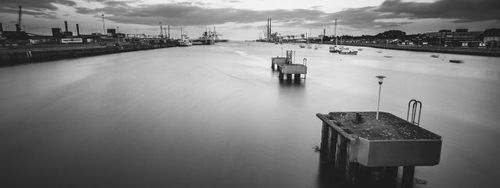
First shots with the Fuji X-T1 and the Lee Big Stopper
03 June 2015
As I'm trying to use my sparkling new Fuji X-T1 as my main camera for when I travel, I'm trying to test it to use it in various scenarios, and one of the them is long exposures. So last week I bought from my trusty shop (Connscameras btw), the 67mm adaptor ring, so I could mount my Lee Big Stopper on the tiny Samyang 12mm f/2 lens (which I reviewed a while ago and I think it's a little great lens), the only landscape lens I have for the moment for the Fuji X System, I tried this weeked to go out and take photos, but the outcome hasn't been great, not because of the gear, but because I had shi... awful light and the place wasn't that great either.
Btw, in that occasion I did try again my other ND filter, the Light Craft Workshop Fader ND Mk II (and part 2), which is great if you only shoot from 35mm and over, but completely crap under 35mm. I wanted to give him a second chance, I thought that maybe with a smaller lens that uses a smaller section it filter, it might work.
No, it doesn't, it's still a piece of crap, don't buy it if you want to use it with ultra wide lenses.
Anyway, so I got the lens adaptor, and the only thing I miss now is a remote for long exposures beyond the 30 seconds limit. I thought I could use the iPhone app for that, but unfortunately even in bulb mode, the app has a limit of 30 seconds. I guess it's kinda tricky to have a stable connection for long times and it might be buggy, but it would be a very nice feature to have on what otherwise would be a very eccellent app.
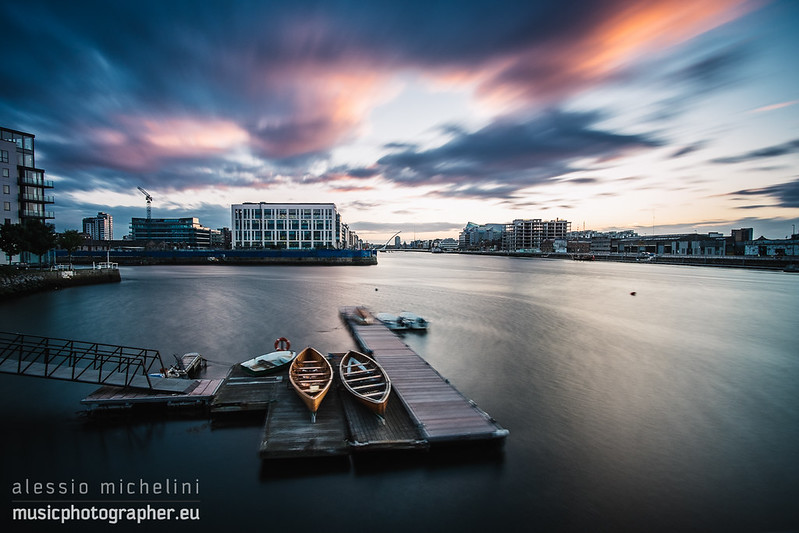

Fujinon XF 35mm f/1.4 R Review
09 March 2015
I wanted to buy this lens since I got my Fujifilm X-E1 over an year ago, but at that time I decided, despite my legendary hate against zoom lenses, to buy it with the Fujinon 18-55 f/2.8-4, just because I wasn’t sure if I wanted to be stuck with just one focal length at the begin. And to be honest I didn’t dislike that lens that much, it was overall very sharp, very well build and light at the same time, a good lens. But, I just can’t stand zoom lenses, and after 6 months I sold it to buy the Samyang 12mm, and I didn’t regret it. Actually, the only regret I had was not to buy the Fujinon 35mm f/1.4 R straight away since the very begin.
But if you buy out of the kit, it’s not supercheap, especially if you don’t plan to spend bags of money as I already invested a lot of money on the Canon system, as for me the Fuji X-E1 was just a small camera to carry around. So, spend more than 500 euro for that lens, it was a bit too much for me.
But then last Xmas, while I was waiting for my flight home at the airport, I saw that Dixons Travel had this lens on an insanely low price: €319. Almost half of the normal price you can generally find it in any store. It was like if it was saying “Buy me, pleeease”, and I couldn’t say no.
And since then I think I did took off from my camera twice, and not for long, as I simply love it.
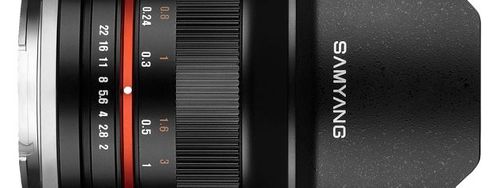
Samyang 12mm f/2 NCS CS review
25 July 2014
I wanted an ultra wide lens since I bought my little Fuji X-E1, the kit lens was a good lens overall, and while for street photography it’s definitely a great lens, for landscapes 18mm (equivalent to a 27mm on a 35mm) are not enough to me, I always felt like it was too long for me. So three weeks ago I decided to sell it in favour of a new ultra wide lens from the Korean manifacturer Samyang (or Rokinon in the States, Walimex somewhere else), the 12mm f/2 NCS CS.
I generally read thousands of review before buying a lens, but in this case I couldn’t find much as this lens came out on the market just a few months ago, but the few reviews I found were all very positive, and I often read good things about Samyang lenses, so I decided to give it a try.

Vintage lenses on mirrorless cameras
02 July 2014
One of the main advantage of a mirrorless system is to being mirrorless (sorry for the pun). Of course in an ideal world where we all rich, the best solution is to buy the top of the gamma lenses of the brand we have and then we are pretty much sorted, but for who just started into photography, or like me, where the mirrorless camera is more a lightweight alternative to the heavy duty DSLR we already own, and maybe we don't want to invest billions on a second system knowing that we already have spend plenty of money for the lenses for the big boy. But there is any cheap alternative? Of course there is, and you can find it in vintage lenses.
On ebay and similar sites, or even in most of the camera shops in your city, it's pretty easy to find old used lenses, sometimes even older than us, and most of the times, unless you are looking for rarities, they are extremely affordable.

Fuji X-E1 review
02 April 2014
About 3 months ago, as some of you probably already noticed it, I bought my first mirrorless: the Fujifilm X-E1 . And after these months I think I get a proper idea of how good or bad is this camera.
This is not going to be an extremely detailed review of the performances of this camera, I didn't do any scientific tests, apart a few photos to compare with my Canon 6D, it's just my experience with this camera.
Why I bought this camera
The main reason I wanted this camera was primary to have a good camera always with me, as I don't like to carry my heavy DSLR with me all the times, and maybe because I'm getting older my back told me that he had enough of heavy camera bags, so I needed something light & small, but at the same time I wanted to have a DSLR-like image quality, something that I can't have with a more traditional compact camera or even a prosumer.
Now, if you spend some minutes looking at my website, you will notice that I'm not the kind of photographer who gets stuck with one specific type of photography. I shoot music, I shoot landscapes, portraits, street, anything I find interesting, in one way or another, it ends up in a photo.
Also I wasn't looking for a replacement for my full frame DSLR, I'm not that silly, and as maybe some photographers can easily claim that they sold they DSLR in favour of a mirrorless and they are happy with it, it's not my case. For how good can be, a mirrorless camera, any of the mirrorless cameras I saw, can do what I can do with my Canon 6D, alongside the pro lenses I bought over the years; and for many reasons: the AF is not as fast as my DSLR, the low ISO and high ISO performances are not as good as my DSLR, and etc...
I wanted a camera that as a "good enough" performances for the moments I don't carry the big brother around, that's it. Something I can use mainly for street photography and some occasional landscapes or portraits, but I didn't need a replacement, but just something to fill a gap.
So after months of reading reviews online, thinking which camera would suits me better, I opted for the Fuji X-E1. I knew the X-E2 was already out, but the improvements of the newer model over the old one it didn't justify the extra money I had to pay for. So after I sold my old and beloved Canon 7D, with that money I went straight to one of the local camera store and I got the little Fuji with the kit lens, the Fujinon 18-55 f/2.8-4 XF R OIS, a bit dark lens for what I'm used to, but still a really good lens for that price.
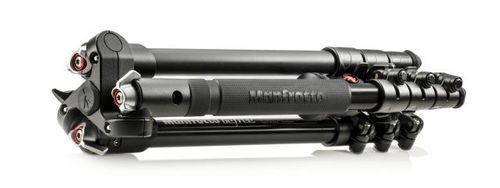
Manfrotto BeFree tripod review
30 November 2013
If you shoot any type of photography where you need slow shutter speed without going up with the ISO, from simple landscape photography to long exposures, you already know that a good tripod is an essential tool. There are no stabilisation technologies that can replace a tripod, they help sometimes, but in most of the cases they are useless if you go slower than a 1/20 of a second. And while you can go really cheap with some other accessories like flashes or filters and still retain some decent quality, buy a 20 euro tripod in Lidl is not really an option, they are too clumsy and too instable to use, and if you take exposures for more than a second, any subtle movement could ruin your photo.
So if you need a tripod, and if you get into photography at some stage you will need one, buy a good one, which has to be as sturdy as possible , and unlike cameras, you don't need to replace them after a couple of years, they will last for a long time.
Until a few months ago my main tripod was a good Manfrotto 190CL, with a basic but really good 3-axis head bought back in 2006, and last Christmas I replaced the head with a joystick one, which is much easier to use, with a quick place.
It's a great tripod, and after years, despite several bumps, a few scratches, it's still in perfect conditions.
It has only one problem: it's heavy!

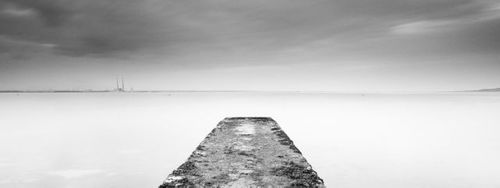
Lee Graduated ND Filters: a quick review
18 July 2013
In an era were the common people, and the common photographers as well, think that you can fix everything with Photoshop, talk about filters it might sounds a bit out of time, retro' if you like it, vintage if you are a feckin hipster, but while some filter can be easily replicated with Photoshop, obtaining the same result or even better, there are some filter that are irreplaceable, like polarizers and ND filters.
You can cheat as much as you want, but those two types of filter cannot be faked.
As I mentioned before, I bought the Lee Big Stopper a few months ago, and I absolutely love it. Quality is brilliant, and 10 stops of light reduction can turn any boring waterways to something amazing. But the problem when it comes to landscape photography, is that you never have an even exposure, you expose for the sky or for the foreground, is one or the other, you cannot have both.
So which options do you have? Well, with two exposures, you can merge them later in photoshop and give the illusion that it's one shot, I did it a billion of times, and most of them it gives a good results, some others not that good. So yesterday I went to one of the local camera shops (after comparing prices online, and when I see that the price is similar, I prefer to buy from local shops), and as I already had the Lee system, I bought the Lee Graduated ND Filters Kit (the hard edge as they are perfect for landscape as I always have a clear line of horizon) which has three different filters:
- Hard 0.3 ND (-1 stop)
- Hard 0.6 ND (-2 stops)
- Hard 0.9 ND (-3 stops)
And just after work I went straight away on one of my favourite places in Dublin, Seapoint, a nice place just above Dun Laoghaire, and a few stops with the Dart from where I live, and I did some quick tests.
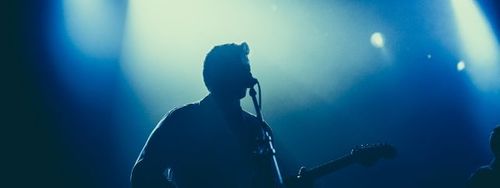
First gig with my Canon 6D: Gypsies on the Autobahn
12 May 2013
I generally don't shoot supporter bands, not because I'm a dick (or am I?) but because I become lazy in the past few years and I always arrive in the venue when the supporter band finishes, but this time the gig was late, and the second supporter band started at the time the main band starts, so at the end Gypsies on the Autobahn became the first band I shot with my brand new camera, the Canon 6D, and beside I have to say that I really like the performance of this band, and they were the perfect models for my "tests shots".
How you can easily understand, this is some sort of quick review of my new camera rather than a normal 3-songs-no-flash review, but I think music photography is probably one of the best fields where you can tell if a camera is good or not. And how it turned out? Well, damn good.